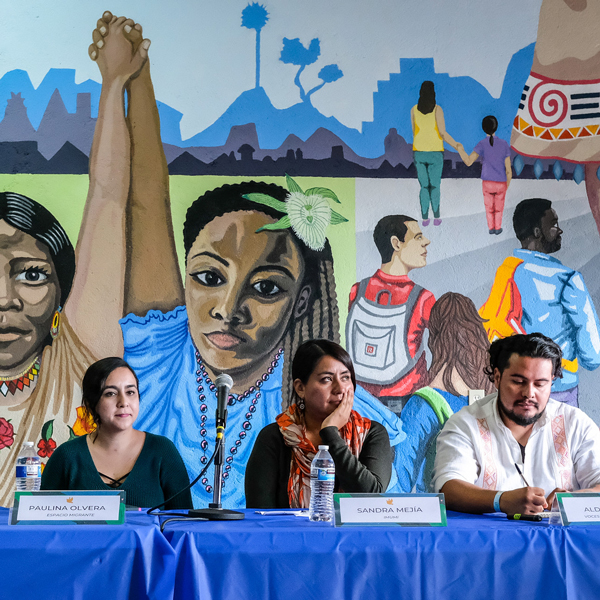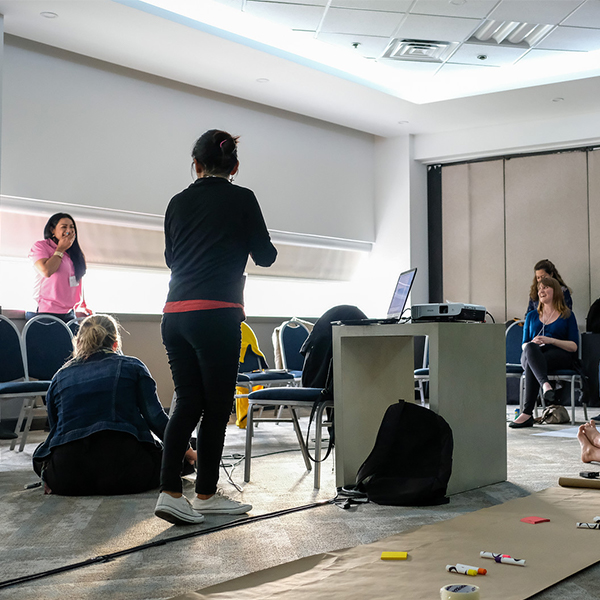Recommended Stories Read All

Africa & The Middle East, Asia, Europe & Eurasia, The Americas

Africa & The Middle East, Asia, Europe & Eurasia, The Americas

Africa & The Middle East, Asia, Europe & Eurasia, The Americas

The Americas
But progress in the sector so far has been modest. Many donors still don’t have the capacity to find and vet truly community-based groups, and only a small percentage of global grants make it to the grassroots. Just 13% of the global grant dollars awarded by US foundations between 2016 and 2019 went directly to groups based in the country where the work was carried out, according to the 2022 State of Global Giving by U.S. Foundations report from Council on Foundations and Candid. Flexible funding is also far from being the norm. According to the report, unrestricted funding accounted for just 14% of US foundations’ global grantmaking during the same period.
This gap between the desire among funders to adopt more locally led and flexible approaches and the reality of identifying community-based organizations is one of the primary reasons why intermediary funders – organizations that serve as bridges between funders and grassroots groups – play such a valuable role.
A recent article in Stanford Social Innovation Review described how “the roles of intermediary organizations are often opaque to those outside of them – funders and grantees alike.” Indeed, intermediaries work in a variety of ways. Some provide a useful function of simply moving funds across borders for donors not equipped to do so. Some, like GFC, move funds while also catalyzing more systemic change by pairing that funding with highly tailored capacity development support for cohorts of organizations tackling challenges in close collaboration. Others, like those described in the aforementioned article, describe themselves as “movement-accountable,” catalyzing funding for grassroots groups and activists in social change movements.
Many intermediary funders have deep connections with grassroots organizations around the world and years of experience understanding what it takes to break the power dynamics that continue to limit progress. GFC plays a valuable role in transforming the restricted funds we receive into unrestricted grants to our partners, and we have more flexibility than private foundations, which allows us to fund unregistered groups and individuals. Lastly, we help to move the sector toward trust-based philanthropy by demonstrating the benefits of these practices while challenging other funders to shift how they perceive risk.
GFC has found creative ways to take the restricted funds we receive from donors and convert them into unrestricted grants for our grassroots partners. For example, when we partnered with Dubai Cares, a global philanthropic organization based in the United Arab Emirates, on an initiative to advance the rights of adolescent girls in Central America, the agreement required GFC to submit highly quantitative reports on specific goals. We were able to find grassroots partners that had the potential to meet these goals, but we kept our grants to these partners flexible, and we took on as much of the reporting burden as possible to minimize the workload for our partners.
As an intermediary funder organized as a public charity in the US and the UK, GFC also has more flexibility than private foundations. This flexibility enables us to fund organizations that are unable to access mainstream financing. In 2019, we changed our policy so that unregistered groups, including those without a fiscal sponsor, could become partners. Our flexible funding has enabled some groups to formally register when appropriate. We can also fund individuals making change, as we do with the Young Gamechangers Fund. We recognize that there are many different ways of organizing to effectively catalyze social change.
In the 2022 State of Global Giving report, some US foundations shared that capacity and structural limitations – like not having a presence in the country where they want to fund work – make it difficult for them to identify and directly fund local groups.
Even when US foundations have the resources to directly partner with groups across national borders, they often fund better-known, large, national organizations operating in capital cities. Finding and supporting truly grassroots groups working in rural areas and other communities with less ready access to global resource networks requires extensive local networks and knowledge of the local context.
One often-cited and erroneous critique of trust-based philanthropy is that funders who practice it assume that just because an organization is local, it is having a positive impact on its community. To identify effective, community-led local organizations, many intermediary funders rely on in-depth scouting processes that include visiting prospective grantee partners in person and meeting with program participants. These processes enable us to locate and qualify hard-to-reach groups led by people with lived experience, including informal groups and collectives, that are working in inclusive and participatory ways for community-driven systems change.
To find grassroots partners for an initiative supporting access to education in Central America, for example, a team of GFC staff that included team members based in Guatemala and Honduras started with a list of 108 organizations, many of which had been recommended by GFC’s local networks. Then the team spent four weeks traveling through the region and visiting 34 organizations, before ultimately selecting 12 grantee partners. Many of these organizations work with children in rural and Indigenous communities, and half of them had tiny annual budgets between $35,000 and $60,000 when they first began partnering with GFC. These types of organizations are difficult to find but often have an incredible impact in their communities.
Some intermediary funders only focus on moving money, which is a valuable role, but many do much more than that. GFC helps grantee partners get better at what they do by providing coaching and connections, including introductions to new funding sources. In this way, we serve as intermediaries not just of funding but also of knowledge, experience, connections, and networks.
At GFC, for example, many of our grassroots partners are nascent groups that don’t have the internal systems to access larger grants. Much of our support is focused on helping them develop their capacity and put systems in place that strengthen the organization. Last fiscal year, we hosted 131 workshops on topics ranging from wellbeing to more technical subjects like monitoring and evaluation, leadership, and governance. We also link grantee partners with other organizations working on similar issues so they can share knowledge and build movements for social change.
Intermediary funders also play an important role in demonstrating how things can be done differently in the sector. This includes embracing participatory grantmaking. By demonstrating the success of grantmaking processes led by communities with lived experience, intermediary funders can inspire similar practices at other organizations.
At GFC, for example, we launched a youth-led participatory grantmaking initiative called the Spark Fund in 2021. For the pilot round, we recruited 40 youth panelists from 15 countries to design the grantmaking process in their regions and award funding to youth-led and youth-focused groups.
The youth panelists zeroed in on critical issues for young people in their countries and selected grantees who likely would have been overlooked in a more traditional grantmaking process. When we ran a mock panel with staff from different departments at GFC as an experiment to see how their decisions differed from the youth panelists’, the differences were striking. After reviewing the same applications as the South Asia youth panel, the mock panelists selected only three of the 14 grantees that had been chosen by the youth panelists.
We’ve since expanded the Spark Fund to launch rounds focused on climate action in Southeast Asia and the mental health and wellbeing of Black boys and young men in the United States.
Organizations like GFC also have a role in catalyzing change processes, helping organizations to leverage community assets and build local agency. Our job is not to train organizations solely to benefit more equitably from the system as it is, but to discover how change really happens and to provoke more fundamental changes in the way things work. In many cases, change happens without any external assistance at all. In other cases, modest amounts of funding and capacity support can catalyze change that truly community-led actors pursue on their own terms. In this way, organizations like GFC act as intermediaries not just of funds but of trust, learning, and different notions of what constitutes evidence, scale, replicability, and accountability.
As a grateful recipient of a MacKenzie Scott grant, we now have the ability to act on some things we had previously only dreamed about doing. We are investing in our learning and research function to understand more deeply under what conditions community-driven systems change can happen, what role community-based organizations play, and how funders should, and should not, support those emergent change processes. Organizations like GFC are acutely aware that while we remain a part of the system we aim to disrupt, we are well-placed to discover what truly novel ways of working look like, so that greater changes can eventually occur.




Global Fund for Children (GFC) UK Trust, created in 2006, is a UK registered charity (UK charity number 1119544). We work to generate vital income, create new fundraising opportunities, and raise awareness of the invaluable work of GFC’s grassroots grantees. Our aim is to extend the reach of GFC in the United Kingdom, Europe, and beyond.
Contact
Work.Life, 4 Crown Place
London EC2A 4BT